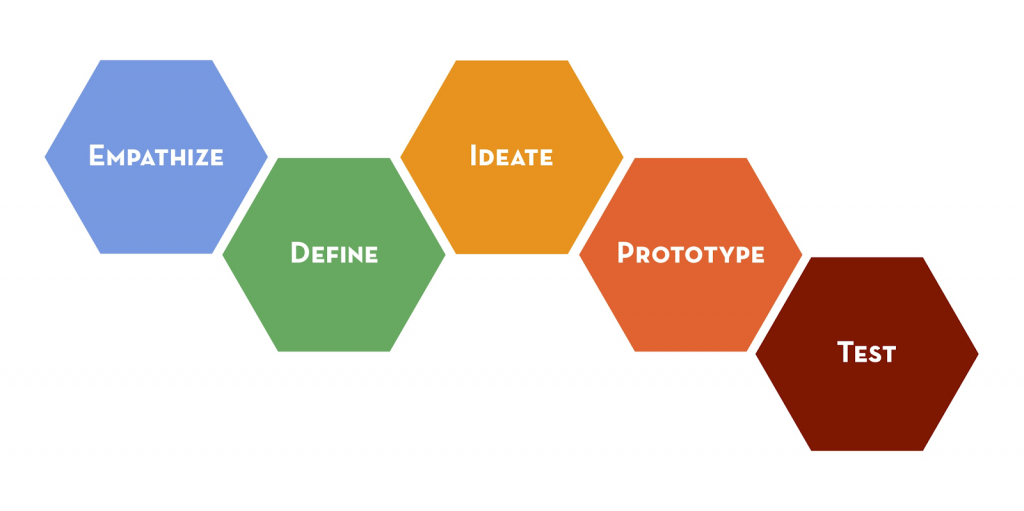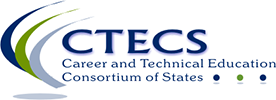Learning Objectives:
Students will
- identify cause-and-effect relationships
- apply problem-solving and troubleshooting steps/methods
- use techniques to support reasoning.
Instructional Steps:
(what the instructor does)
This activity follows the 5-E model for learning. 5E is a progressive approach to instruction with the following stages: Engage, Explore, Explain, Elaborate, and Evaluate. In this case, Engage is a pre-assessment, and Evaluate is a post-assessment. The Explore and Explain stages build knowledge, and the Elaborate is an application activity with an artifact. In addition, there is a career connection activity that is best done after the activity.
Instruct the students to:
- Engage:
- This warm up pre-assessment should take about 5-10 minutes.
- Students are prompted with 4 questions about facial masks worn for the prevention of the spread of COVID-19.
- Explore:
- This portion of the activity should take about 15 minutes.
- Students are prompted to watch a 2-minute news video: “Face Mask Recommendations Pose New Challenges For Deaf And Hard Of Hearing Community,” and reflect in their journal or discuss with a small group.
- Students are prompted to watch the 3-minute video: “First fully transparent surgical mask about to go into production,” and reflect in their journal or discuss with a small group.
- If time allows, encourage students to revisit their brainstorm from the pre-assessment with more ideas to improve masks.
- Explain:
- This portion of the activity should take about 10 minutes.
- Students are prompted to watch a 2-minute video: “What Is Design Thinking?” and reflect in their journal or discuss with a small group.
- Students are prompted to relate the design thinking back to the second video in the Explore phase, and explain how those engineers used design thinking to solve a problem.
- Elaborate:
- This portion of the activity should take anywhere from 15 to 30 minutes, or more, depending on the complexity of the designs.
- PRIMARY ARTIFACT: Students will apply the design thinking process to solve a problem. They will describe in detail how they could work through each step to create a solution for a meaningful problem. If possible, they should create a prototype with basic supplies (paper, tape, string, straws, wooden sticks, etc.), test it, and make any necessary revisions. The prototype is part of the artifact, but the written explanation of how they used each step of the design thinking process is most important.
- Career Call-out:
- This portion of the activity could take 10-20 minutes.
- Students are encouraged to explore a discipline of engineering that interests them. They can share in pairs, or you can do a jig-saw type activity so that each student learns about multiple disciples of engineering.
- EXTENSION: You can also have each student make a flyer or poster for the discipline for the classroom or hallway.
- Evaluate:
- This portion of the activity should take about 5-10 minutes.
- Students are prompted with four questions that wrap up the activity.
Special Note to Teachers:
Women and people of color are significantly underrepresented in engineering. The root causes of this issue are plenty, but they do not include girls and students of color not being good problem-solvers or not being good at math. Make every effort to challenge stereotypes and dispute any language that suggests engineering is for boys, nerds, etc. If you choose to highlight engineers in your classroom, they should be diverse representations.
EXPLORE
In addition to sign-language, many deaf and hard-of-hearing people depend on lip-reading and facial expressions to communicate. Since typical masks cover over half of the face, this poses significant challenges.
Watch the 2-minute news video: “Face Mask Recommendations Pose New Challenges For Deaf And Hard Of Hearing Community,” and answer the following questions in your notebook or discuss in small groups:
- Based on what you heard in the video, write a sentence that describes the problem that masks cause for deaf and hard-of-hearing people.
- In addition to sign-language, many deaf and hard-of-hearing people depend on lip-reading and facial expressions to communicate.
- What is one solution that was offered at the end of the video?
- A student developed a mask with a clear plastic piece in front of the mouth.
Watch the 3-minute video: “First fully transparent surgical mask about to go into production,” and answer the following questions in your notebook or discuss in small groups:
- In the video, the scientists and engineers talk about how important empathy is for medical care. What is empathy?
- ANSWER: Empathy is the ability to understand and share the feelings of another. It is connecting to the emotion another person is experiencing and not the actual experience.
- How does a typical mask affect ability communicate empathy?
- ANSWER: Empathy can be communicated through facial expressions. Since masks cover over half of our face, it can be difficult to convey empathy.
- Write a statement that defines the problem the scientists and engineers are trying to solve.
- ANSWER: They want to develop a medical grade mask that is semi-transparent to help improve ability to communicate empathy to patients.
- At the 2-minute mark, in addition to a transparent material, the engineer describes the design constraints. List the three items she shares:
- ANSWER:
- Defined pictorial filtration efficiency
- Air permeability
- Resistance to liquid splashes
- ANSWER:
BONUS: Now that you’ve watched these videos, what additional ideas do you have to make a mask that addresses some of challenges you identified?
EXPLAIN
Design thinking is a methodology for creative problem solving. Watch the 2-minute video: “What Is Design Thinking?” and answer the following questions in your notebook or discuss in small groups:
- What are the five steps to design thinking, and what does each mean to you?
- ANSWERS:
- Empathize: Empathy is the ability to understand and share the feelings of another. In this stage of the process, you learn about the audience and understand the problem.
- Define: It’s hard to solve the problem without first defining it! In this stage of the process, you determine the objectives and the challenges.
- Ideate: In this stage of the process, you brainstorm and create solutions. There are no bad ideas!
- Prototype: In this stage of the process, you build representations of one or more ideas. You are building to learn, not building a product to last.
- Test: In this stage of the process, you test your ideas, gain user feedback, then start over as many times as needed, refining as you go. The refining process is iterative, NOT linear.
- ANSWERS:
- Describe how the scientists and engineers who designed the first fully transparent medical mask (see previous step) used the design thinking process to solve the problem of a mask that blocks vision of the face.

ELABORATE
We are all problem-solvers! Engineers solve problems that make a world of difference and help shape our future. How could you use the design thinking process to solve a problem? Describe in detail how you could work through each step to create a solution for a meaningful problem. If possible, create a prototype (with materials on hand), test it, and make any necessary revisions. (If you’d like to use the design thinking process to make improvements to a mask, you can.)
The most important part of this exercise is NOT prototype development, but more so the empathize, define, and ideate portions of the process. You should prepare a brief report, or show in your notebook, how you moved from each stage of the process to the next.
CAREER CALL-OUT
Engineers are creative and collaborative problem solvers that make a world of difference and help shape our future. Engineering is essential for our health, happiness, and safety!
Visit the following webpage and select an engineering discipline that looks most interesting to you. Explore what they do, how much they earn, and the key requirements. Share with a classmate the types of problems that they solve, and why it is an interesting career.
https://www.sciencebuddies.org/science-engineering-careers#engineering
Artifacts:
(what the students produce to indicate completion)
- Pre-Assessment
- Reflections and notes from the engage, explore, and explain sections.
- Applying the design-thinking model to solve a problem. Upload your answers after each video, notes, design sketches, problem solving steps.
- Activity Assessment
Evaluation method:
Instructors may use this simple rubric for the artifacts.
OR
Another, more thorough rubric is supplied here: New York CTE Center Rubric. To produce a customized rubric, instructors should select only those competency/line items that they wish to evaluate for this activity.
Differentiation method:
(to address learning styles and disabilities)
- For the three videos, deaf and hard of hearing students can use YouTube’s closed captioning feature.
- Blind students will need a screen reader for the career exploration website, as well as for the activity content.
- Some students may need more time for the reflection portions, as well as the artifact creation section.
- Consideration may be made in the selection and formation of small discussion groups. We recommend groups no larger than 4, ranging in academic ability.
Vocabulary
- Empathy, the ability to understand and share the feelings of another. It is connecting to the emotion another person is experiencing and not the actual experience
- Design constraints, conditions that need to happen for a project to be successful
- Design thinking, a methodology for creative problem solving
- Prototype, a first or preliminary model of something, from which other forms are developed or copied

